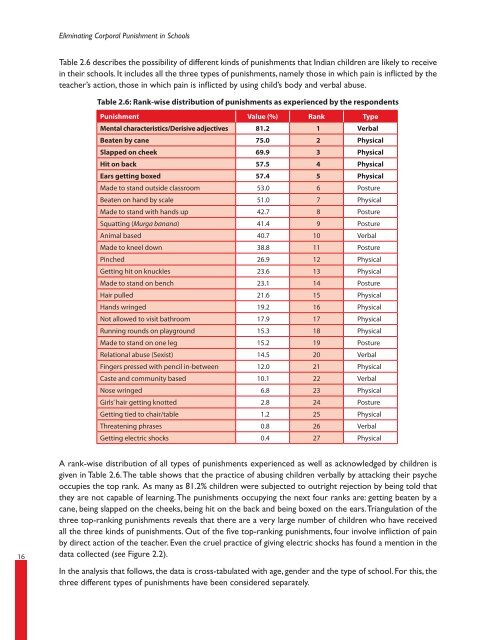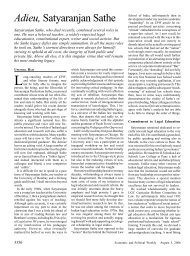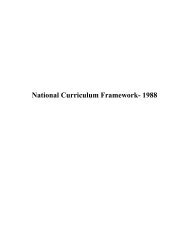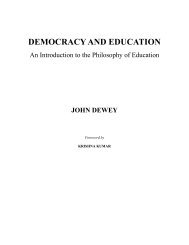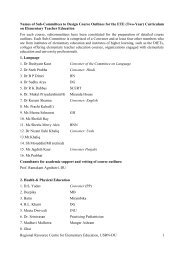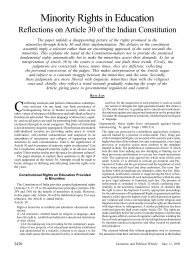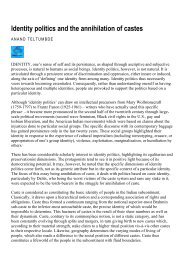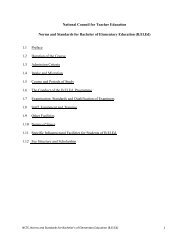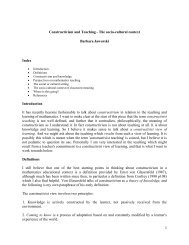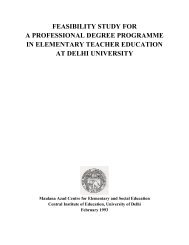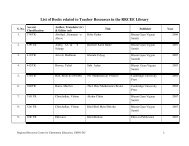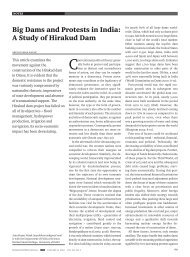Corporal Punishment - Eledu.net
Corporal Punishment - Eledu.net
Corporal Punishment - Eledu.net
You also want an ePaper? Increase the reach of your titles
YUMPU automatically turns print PDFs into web optimized ePapers that Google loves.
Eliminating <strong>Corporal</strong> <strong>Punishment</strong> in SchoolsTable 2.6 describes the possibility of different kinds of punishments that Indian children are likely to receivein their schools. It includes all the three types of punishments, namely those in which pain is inflicted by theteacher’s action, those in which pain is inflicted by using child’s body and verbal abuse.Table 2.6: Rank-wise distribution of punishments as experienced by the respondents<strong>Punishment</strong> Value (%) Rank TypeMental characteristics/Derisive adjectives 81.2 1 VerbalBeaten by cane 75.0 2 PhysicalSlapped on cheek 69.9 3 PhysicalHit on back 57.5 4 PhysicalEars getting boxed 57.4 5 PhysicalMade to stand outside classroom 53.0 6 PostureBeaten on hand by scale 51.0 7 PhysicalMade to stand with hands up 42.7 8 PostureSquatting (Murga banana) 41.4 9 PostureAnimal based 40.7 10 VerbalMade to kneel down 38.8 11 PosturePinched 26.9 12 PhysicalGetting hit on knuckles 23.6 13 PhysicalMade to stand on bench 23.1 14 PostureHair pulled 21.6 15 PhysicalHands wringed 19.2 16 PhysicalNot allowed to visit bathroom 17.9 17 PhysicalRunning rounds on playground 15.3 18 PhysicalMade to stand on one leg 15.2 19 PostureRelational abuse (Sexist) 14.5 20 VerbalFingers pressed with pencil in-between 12.0 21 PhysicalCaste and community based 10.1 22 VerbalNose wringed 6.8 23 PhysicalGirls’ hair getting knotted 2.8 24 PostureGetting tied to chair/table 1.2 25 PhysicalThreatening phrases 0.8 26 VerbalGetting electric shocks 0.4 27 Physical16A rank-wise distribution of all types of punishments experienced as well as acknowledged by children isgiven in Table 2.6. The table shows that the practice of abusing children verbally by attacking their psycheoccupies the top rank. As many as 81.2% children were subjected to outright rejection by being told thatthey are not capable of learning. The punishments occupying the next four ranks are: getting beaten by acane, being slapped on the cheeks, being hit on the back and being boxed on the ears. Triangulation of thethree top-ranking punishments reveals that there are a very large number of children who have receivedall the three kinds of punishments. Out of the five top-ranking punishments, four involve infliction of painby direct action of the teacher. Even the cruel practice of giving electric shocks has found a mention in thedata collected (see Figure 2.2).In the analysis that follows, the data is cross-tabulated with age, gender and the type of school. For this, thethree different types of punishments have been considered separately.


